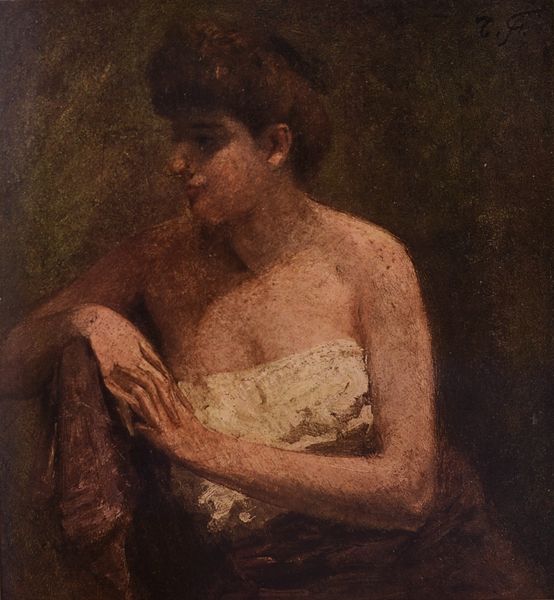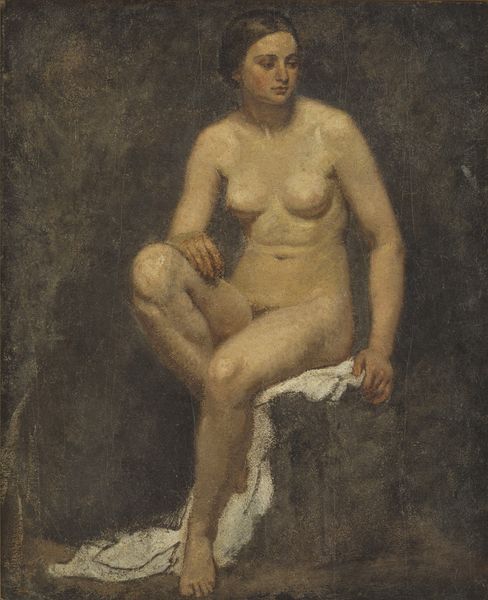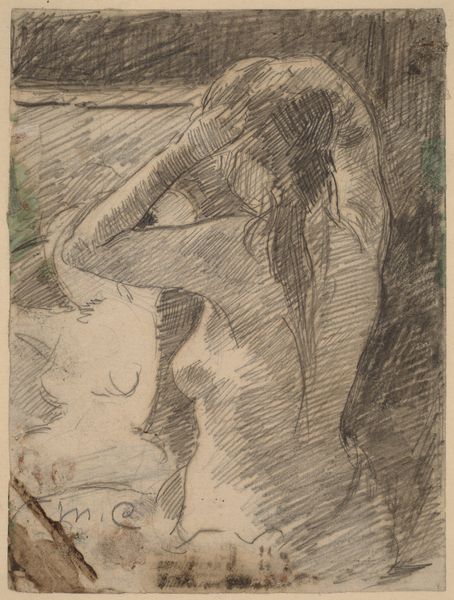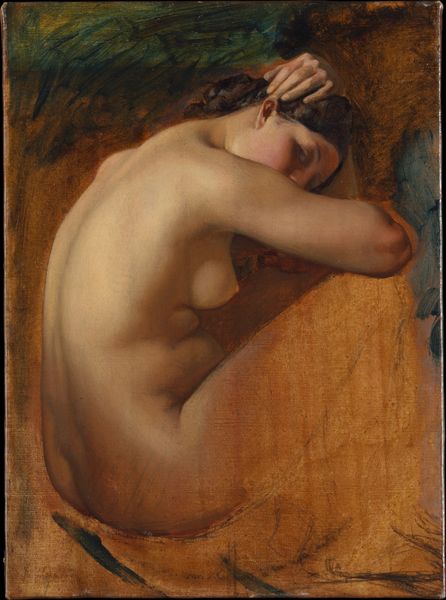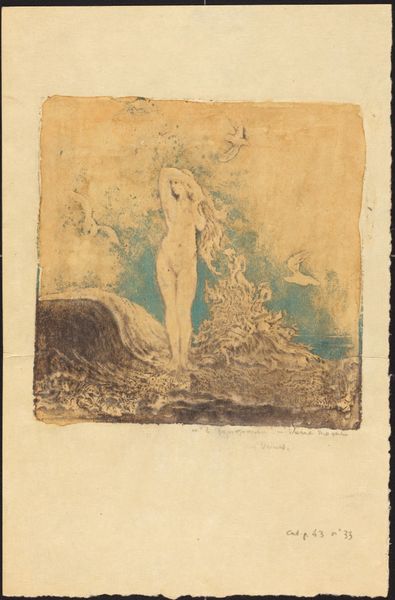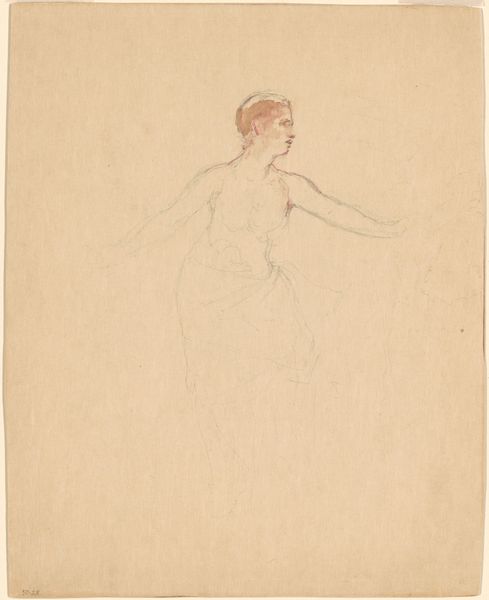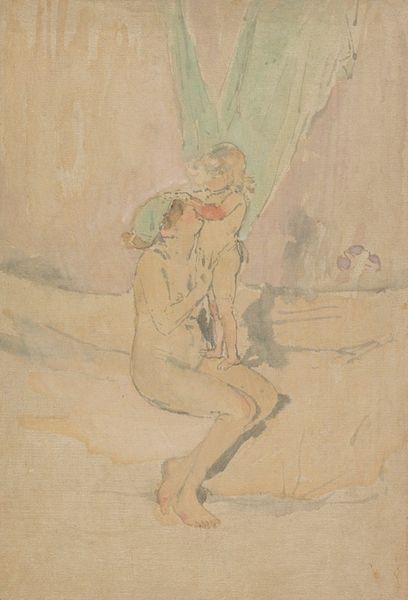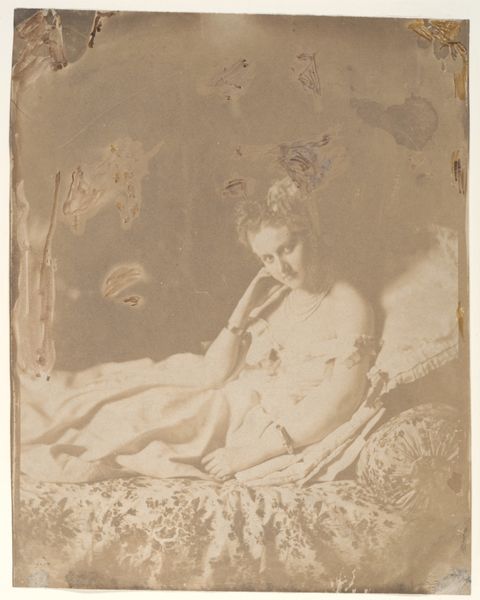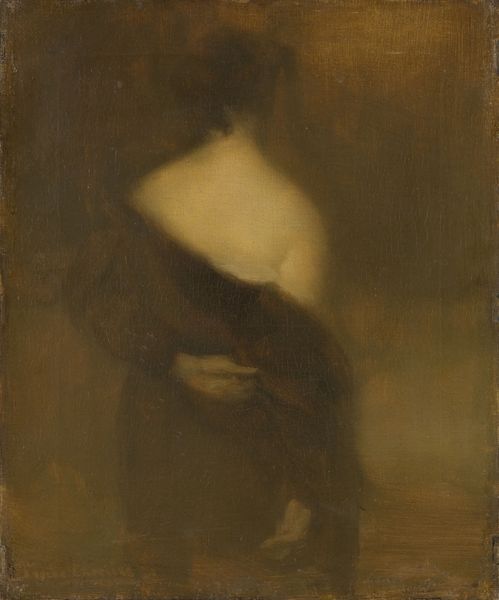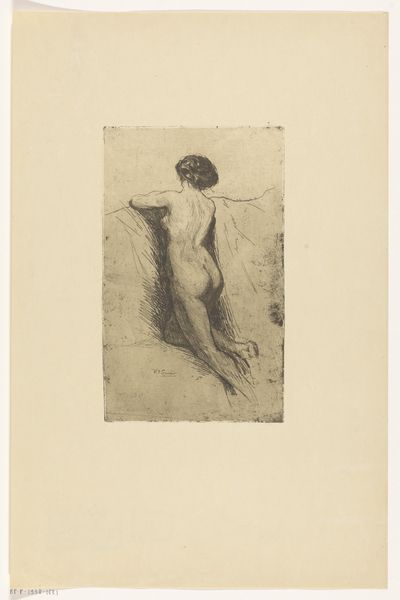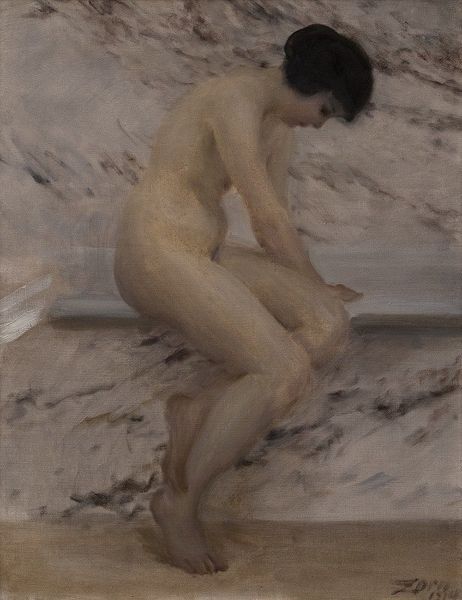
painting, watercolor
#
portrait
#
painting
#
charcoal drawing
#
watercolor
#
academic-art
#
watercolor
#
realism
Copyright: Public domain
Editor: This watercolor and charcoal piece, "In the Studio (unfinished)" by Thomas Eakins from 1884, strikes me as rather vulnerable. What do you see in this seemingly private glimpse into an artist's workspace and its subject? Curator: It’s fascinating how Eakins uses the "unfinished" state itself as a comment on the artistic process and the representation of women. Given the period, we must consider the power dynamics inherent in the male artist observing and depicting a female model. Does her gaze meet ours? No, she’s looking away, almost trapped within the artist's gaze and the frame itself. Editor: I hadn't thought about it that way, about power. It looks so candid, almost like a quick study. Curator: And that's partly the point, I believe. Eakins was challenging academic conventions. Instead of presenting a polished, idealized image, he offers us something rawer, something that hints at the labor and the unequal relationship in play when depicting the female form in the late 19th century. How does that incompleteness change our interpretation, knowing this was likely for academic study? Editor: It makes me think about the male gaze. Even unfinished, the artist is controlling what we see. Was Eakins aware of his own power? Curator: That’s the crucial question. His commitment to realism, sometimes perceived as unflinching objectivity, could also be interpreted as a form of control. Considering the institutional power structures of the art world then and even now is critical in approaching this work. Editor: It's fascinating how much social context influences even a seemingly simple portrait. I see so much more to it now. Curator: Precisely. The power of art lies not just in what it depicts, but also in what it reveals about the society that produced it.
Comments
No comments
Be the first to comment and join the conversation on the ultimate creative platform.

